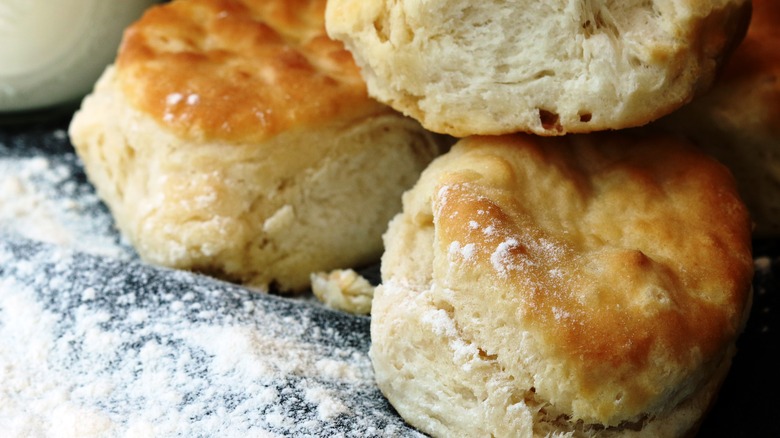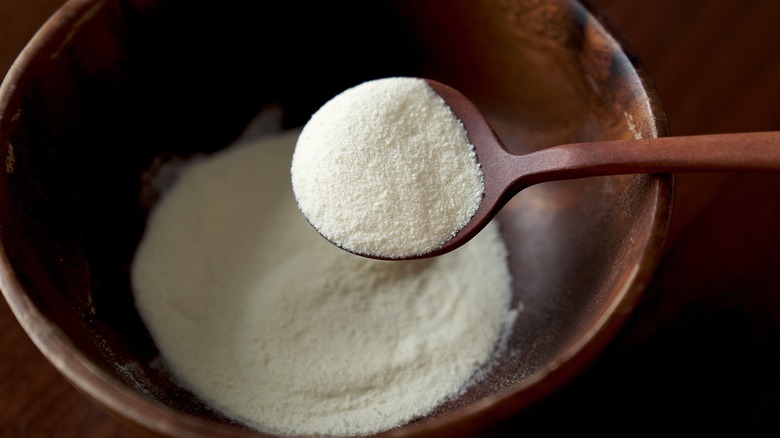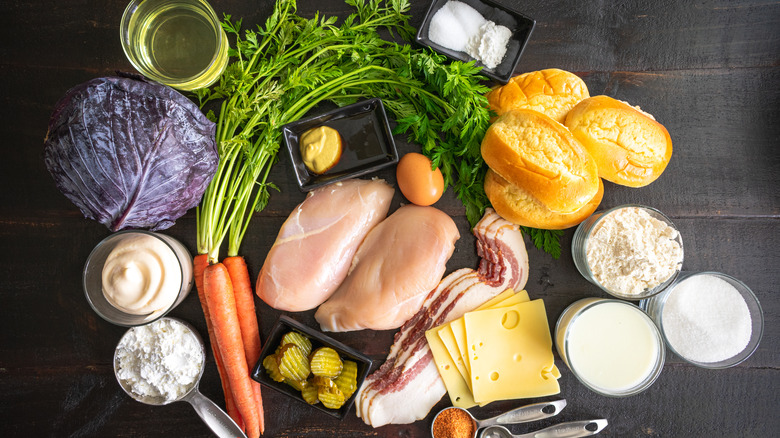It Pays To Bake With Powdered Buttermilk (And It's Just As Good)
You know buttermilk as the star of beloved foods like buttermilk biscuits, ranch dressing, and fried chicken. Essentially cultured milk, it's a fermented dairy ingredient that gives baked goods an extra fluff, tenderizes meat, and adds a subtle tangy flavor to set any dish apart.
The problem with buttermilk is that you rarely need as much as a carton provides, and it's one of those doomed grocery store purchases that tends to come with an inevitable, sorry fate — getting shoved in the back of the fridge and forgotten about until it's way past its prime. But there's a way to prevent this fate, and it involves skipping the carton of buttermilk entirely.
You may have not known that powdered buttermilk is even a thing, and we wouldn't blame you. It sounds kind of ... wrong. How can a powdered form of buttermilk — something that's naturally so thick, smooth, and creamy — even work? Sounds like a cheap knock-off that isn't worth your time, right? Wrong. Buttermilk powder is a thing, and it's worth knowing about.
Why buttermilk powder takes the cake
Here's the thing: Buttermilk is technically the tangy liquid that's left over when cultured cream is churned into butter, but that's almost never what you're buying at the grocery store; most store-bought buttermilk is just skim milk with added cultures (per America's Test Kitchen). So, in most cases, buttermilk powder is even better than liquid buttermilk because it's derived from the real thing.
Buttermilk powder is basically buttermilk — actual buttermilk — that's been heated, dehydrated, and transformed into a fine powder. Because many brands make their product from cultured cream that's been churned and strained (the way buttermilk should be made), cultured powdered buttermilk can often offer even more flavor and benefits to your baking. That's why Food & Wine found that baked goods taste just as good, if not better, with buttermilk powder.
Buttermilk powder also lasts pretty much indefinitely, giving it a superior bang for your buck compared to that quart or more of buttermilk, most of which often ends up getting wasted and thrown out. It's more economical, less wasteful, easy to bake with, and often yields better results. It's a buttermilk no-brainer.
How to use buttermilk powder in your recipes
Don't worry, there aren't any confusing substitution ratios involved here — buttermilk powder is super simple to use. Various brands may indicate different quantities, but all you need to do is combine the directed amount of powder with the directed amount of water and replace the same amount of liquid buttermilk that the recipe calls for.
For example, brands like Saco call for 1 part powder to 4 parts water. You can go about using the powdered buttermilk in your recipe in two different ways: You can simply combine the powder with water to create a liquid buttermilk and use it like you would any other buttermilk, or as Saco recommends, you can mix the appropriate amount of powder with the rest of your dry ingredients, and then add the amount of water you need when the recipe calls for buttermilk.
Whether you're making delicious buttermilk pancakes, waffles, soup, pasta, or chicken, this powdered buttermilk will work just as well, if not better, than liquid buttermilk to enhance and level up your recipes.


